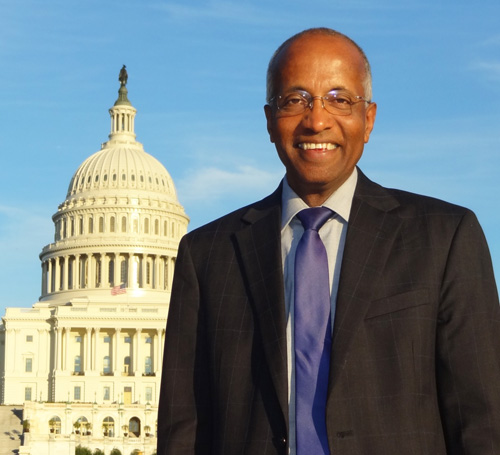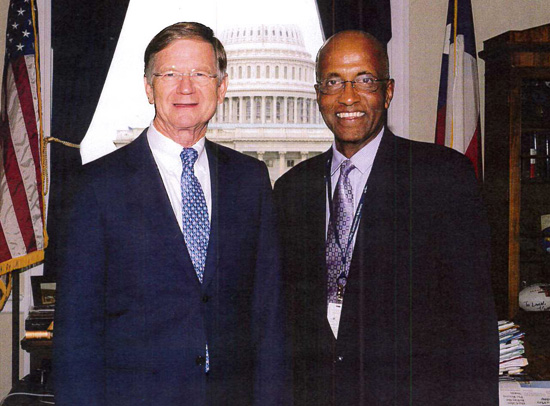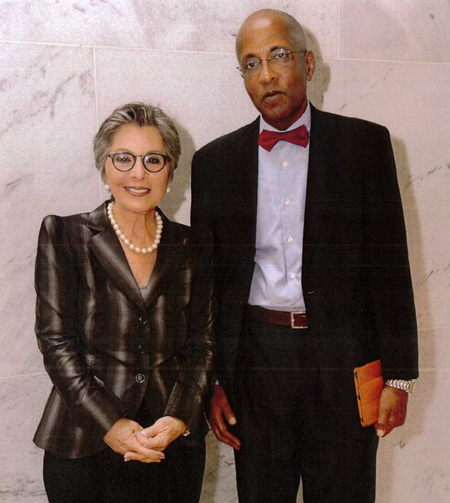Former ASME Federal Fellow Mahantesh Hiremath Reflects on His Year on Capitol Hill
Former ASME Federal Fellow Mahantesh Hiremath Reflects on His Year on Capitol Hill

From September 2013 through last August, Mahantesh Hiremath, PhD, served as one of two ASME Congressional Fellows who spent a year-long term providing engineering and scientific insight to policymakers in Washington, D.C.
For the past 41 years, the ASME Federal Government Fellowship Program has provided an opportunity for Society members to work with the U.S. Congress, participating directly in the lawmaking process. As the Federal Fellows gain an understanding of how the federal government operates, Congress, in turn receives the engineering expertise necessary to create effective technical legislation. In addition, Federal Fellows’ employers benefit from having an employee with comprehensive knowledge of congressional policy-making practices.
During his Fellowship, Hiremath, an engineer at communications satellite and space systems company Space Systems Loral (SSL), located in Palo Alto, Calif., served on the majority staff of the House Committee on Science, Space and Technology (SST) in analyzing energy and environmental issues. Following a three-week Fellowship orientation, he joined the SST's Energy and Environment Subcommittee and assumed a number of responsibilities including attending weekly staff meetings; taking part in strategizing sessions for hearings; identifying and selecting hearing witnesses; writing position statements; preparing briefing notes; and assisting in the drafting of legislation.
During his 2013-2014 Fellowship, Hiremath helped the subcommittee prepare for more than a dozen energy-and-environment-related Congressional hearings, including hearings concerning the Environmental Protection Agency’s Carbon Plan, the United Nation’s Intergovernmental Panel on Climate Change, the Department of Energy’s Science and Technology Priorities, and EPA power plant regulation, as well as such currently relevant topics as energy independence and weather and climate change.

Another key accomplishment during Hiremath’s Fellowship was assisting in the drafting of the Enabling Innovation for Science, Technology, and Energy in America Act, or the EINSTEIN America Act, which ultimately formed part of the part of the DOE Research and Development Act of 2014, later introduced into the House in June 2014.
Hiremath found his year on Capitol Hill — and specifically working on the EINSTEIN America Act — an enlightening experience regarding the law-making process. He also developed a lot of empathy and admiration for the decision making process that lawmakers follow in order to meet their competing duties of legislation and representation. It appeared to him that the lawmakers are required to solve an optimization problem for every decision they make, a problem with too many variables and many hard constraints.
“Science policy is very different compared to science itself,” he said. “As scientists or technologists, we look at things in a very black-and-white manner. Science policy, however, is influenced by stakeholders — people who support or oppose issues and have various levels of influence. That’s why what comes out of the science policy may be more of a reflection of society than a scientific opinion.”

For that reason, it is vital that engineers engage in the policy-making process through such activities as the ASME Federal Fellowship Program, according to Hiremath. “The onus really is on the scientist and technical professionals to convey the value of their work in a way that can be understood by the community at large,” Hiremath concluded in the year-end report summarizing his Fellowship. “Effective science communication is the need of the hour.”
In addition to benefiting the law-making process and the professional development of the engineers who serve as Fellows, the ASME Federal Fellows Program also has potential advantages for industry. The only engineer from industry among the more than 170 fellows from various professional societies serving on Capitol Hill during his term, Hiremath encourages other companies to follow his company SSL’s lead, noting the value of having “an engineer who has worked on Capitol Hill, who has some understanding of how the legislative process worked, and what kind of questions or concerns will be raised about the design of their product,” he said. If an engineer can bring that information back to his or her firm, they gain insight into the concerns that may need to be addressed early in the design and development of their products, he said. The ASME Federal Government Fellowship program provides an invaluable opportunity for members from industry to offer their technical expertise to policymakers. The result is better public policy for the nation and its industrial base.
ASME is currently accepting applications through Jan. 31, 2015 for two 2015-2016 Federal Fellowship opportunities: the ASME Congressional Fellowship and the ASME Foundation Swanson Fellowship on Advanced Manufacturing. The 2015-2016 Congressional Fellow will spend one year in Washington, D.C., working with the staff of a congressional committee, U.S. senator or U.S. representative. The ASME Foundation Swanson Fellow will serve a one-year term at the Advanced Manufacturing National Program Office, hosted by the National Institute of Standards and Technology, in Gaithersburg, Md.
To learn more about ASME Federal Government Fellowship Program, or to apply for one of the 2015-2016 Fellowships, visit https://www.asme.org/about-asme/get-involved/advocacy-government-relations/federal-fellows-program.
For the latest news, regulations and announcements on the priorities outlined in ASME’s Public Policy Agenda and how you can become engaged in ASME Government Relations, please visit the ASME Public Policy Education Center at http://ppec.asme.org/.




